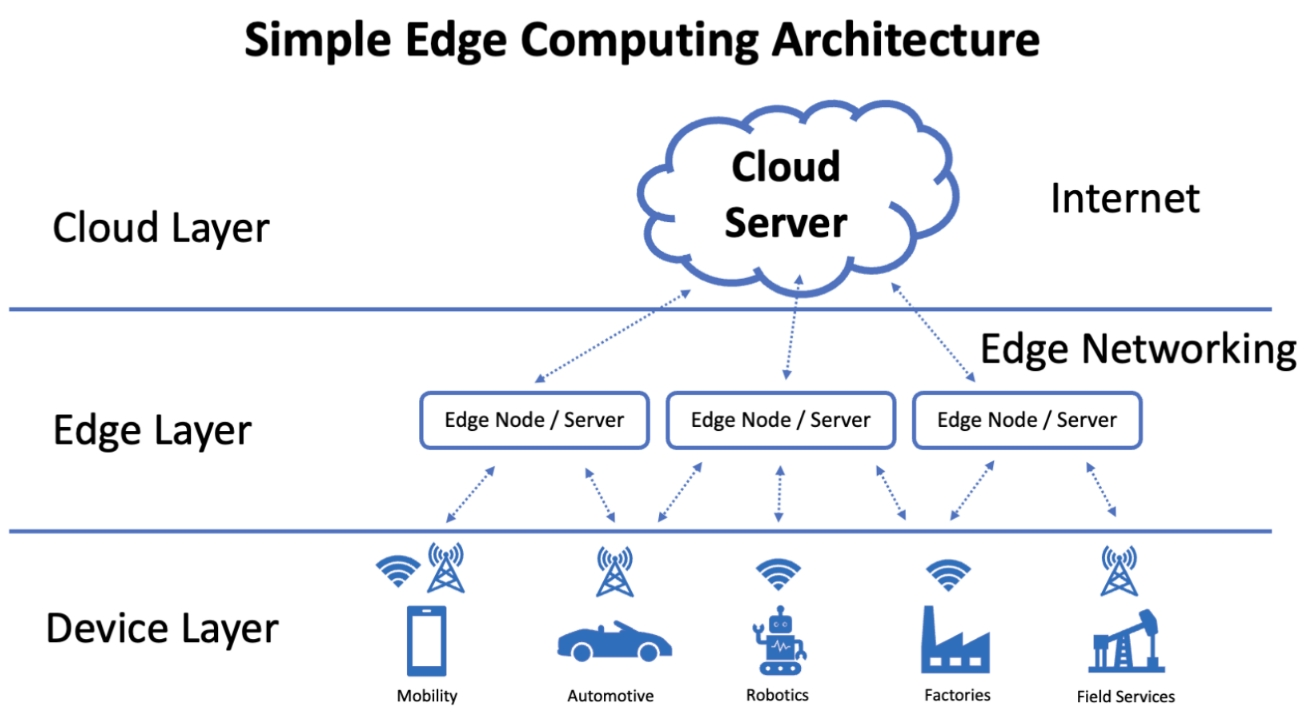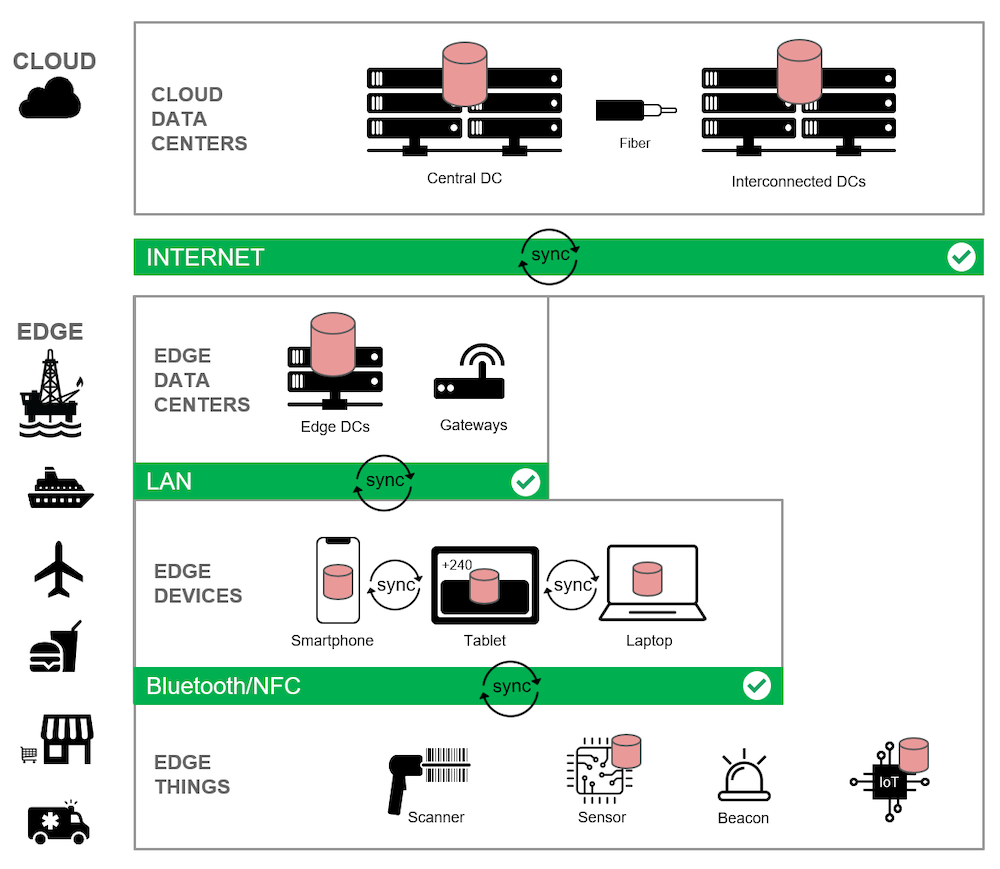- Published on
Edge Computing Processing at the Source
- Authors

- Name
- Adil ABBADI
Introduction
The proliferation of internet of things (IoT) devices, 5G networks, and the increasing demand for real-time data analysis have given rise to a new computing paradigm: edge computing. By processing data closer to its source, edge computing reduces latency, improves performance, and enhances security. This article will explore the concept, benefits, and applications of edge computing, as well as its architectures and use cases.

- The Need for Edge Computing
- Edge Computing Architectures
- Applications of Edge Computing
- Challenges and Future Directions
- Conclusion
- Get Started with Edge Computing Today!
The Need for Edge Computing
Traditional cloud computing architectures rely on centralized data centers, which can lead to high latency, bandwidth congestion, and security risks. As IoT devices generate massive amounts of data, transmitting it to the cloud or a central server can be inefficient. Edge computing addresses these challenges by processing data closer to the source, reducing the amount of data transmitted and improving overall system performance.
# Example Python code for edge device data processing
import pandas as pd
# Load sensor data from IoT device
data = pd.read_csv('sensor_data.csv')
# Process data using machine learning model
processed_data = model.predict(data)
# Send processed data to cloud or central server
send_to_cloud(processed_data)
Edge Computing Architectures
Edge computing architectures can be categorized into three types:
1. Device Edge
Device edge computing involves processing data directly on IoT devices, such as smart home thermostats or industrial sensors. This approach minimizes latency and reduces the amount of data transmitted to the cloud or central server.
2. Edge Gateway
Edge gateway computing uses a dedicated device or gateway to process data from multiple IoT devices. This approach provides a single point of management and can be used in scenarios where devices have limited computing capabilities.
3. Micro Datacenter Edge
Micro datacenter edge computing involves deploying small, modular data centers at the edge of the network. These micro datacenters can be used to process large amounts of data from multiple devices and applications.

Applications of Edge Computing
Edge computing has numerous applications across various industries, including:
1. Industrial Automation
Edge computing can be used to analyze sensor data in real-time, enabling predictive maintenance and optimizing industrial processes.
2. Smart Cities
Edge computing can process data from traffic management systems, smart energy grids, and public safety cameras, enabling real-time decision-making and improving urban infrastructure.
3. Healthcare
Edge computing can be used to analyze medical imaging data in real-time, enabling clinicians to make timely diagnoses and improving patient outcomes.
Challenges and Future Directions
While edge computing offers numerous benefits, it also presents challenges, such as:
1. Security
Edge devices can be vulnerable to cyber attacks, making security a top concern.
2. Data Management
Managing data across multiple edge devices and sources can be complex.
3. Standardization
Lack of standardization can hinder the adoption of edge computing across different industries and use cases.
Despite these challenges, edge computing is poised to revolutionize the way we process and analyze data. As the technology continues to evolve, we can expect to see widespread adoption across various industries.
Conclusion
Edge computing is a paradigm shift in data processing, enabling real-time analysis and decision-making. By processing data closer to the source, edge computing reduces latency, improves performance, and enhances security. As the technology continues to mature, we can expect to see widespread adoption across various industries, leading to improved efficiency, productivity, and innovation.
Get Started with Edge Computing Today!
Explore edge computing solutions and start building your own edge computing projects today. Join the edge computing community to stay updated on the latest trends, technologies, and use cases.
